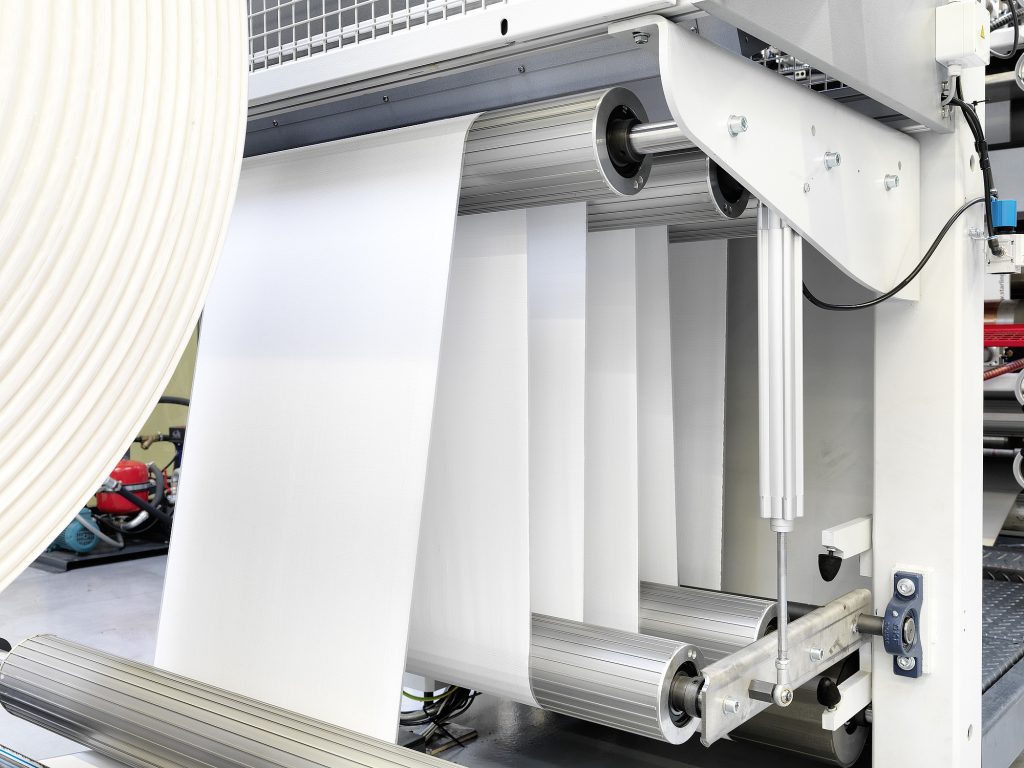
Opening Dialogue
Product Manager (PM): “Ray, our clients demand packaging that guarantees 100% moisture resistance and UV protection. How can VidePak ensure our composite woven bags outperform competitors?”
Ray (CEO, VidePak): “By combining Starlinger’s precision engineering with ISO-certified raw materials, we’ve engineered aluminum-PE composite bags that exceed ASTM and EN standards. Our four-pillar strategy—supplier vetting, premium PP/PE sourcing, long-term partnerships, and rigorous QC—ensures unmatched durability for fertilizers, chemicals, and high-value goods.”
H2: Raw Material Quality Control: The Foundation of High-Performance Composite Bags
The integration of aluminum foil and PE linings in woven bags requires meticulous attention to raw material quality. VidePak’s approach aligns with global best practices to ensure consistency, compliance, and cost efficiency.
H3: Supplier Qualification and Compliance
Supplier qualification (SQ) is the first critical step. VidePak evaluates suppliers based on:
- Certifications: ISO 9001/14001, ASTM compliance (e.g., ASTM C578 for polymer thermal stability).
- Technical Capability: Production capacity audits, R&D investment, and adherence to EN 13432 for recyclability.
- Market Reputation: Third-party reviews and client testimonials, particularly for chemical-resistant PE linings used in fertilizer packaging.
For example, a supplier providing aluminum foil must demonstrate compliance with ASTM B80 for corrosion resistance, critical for ammonium nitrate storage.
H3: Strategic Sourcing from Tier-1 Polymer Suppliers
VidePaK sources virgin PP/PE resins exclusively from industry leaders like BASF, Sinopec, and Yangzi Petrochemical. These partnerships ensure:
- Consistent MFI (Melt Flow Index): Ranging from 2–12 g/10 min (190°C/2.16 kg), tailored for extrusion and lamination processes.
- UV Stabilization: BASF’s IrgaStab additives enhance UV resistance, reducing degradation by 40% in outdoor storage.
Long-term contracts lock in pricing and prioritize supply chain resilience—a key advantage during raw material shortages.
H2: Incoming Material Inspection: Data-Driven Quality Assurance
VidePak’s QC lab follows a multi-step protocol to validate raw materials:
| Test Parameter | Method | Acceptance Criteria |
|---|---|---|
| MFI | ASTM D1238 | ±5% of supplier’s spec |
| Tensile Strength | ISO 527 | ≥30 MPa (PP), ≥20 MPa (PE) |
| Thickness Variance | ASTM D6988 | ≤±0.02 mm |
| Aluminum Foil Purity | XRF Analysis | ≥99.5% Al content |
Data from 5,000+ annual tests are logged into SAP QMS, enabling traceability and predictive analytics for defect reduction.
Case Study: In 2024, a batch of PE resin from Yangzi Petrochemical showed a 12% MFI deviation. VidePak’s automated alert system triggered a re-test, preventing a $250K production loss.
H2: Engineering Excellence with Starlinger Technology
VidePak’s 100+ Starlinger circular looms and 30 lamination machines enable high-speed production of composite bags with:
- Seam Precision: Ultrasonic sealing ensures <0.01% leakage rates, validated by ASTM F392 leak tests.
- Custom Printing: 8-color flexographic printing aligns with brand guidelines while maintaining >95% opacity.
FAQs
Q: Why choose aluminum foil over metallized films?
A: Aluminum foil provides 100% UV blockage and superior heat reflection (up to 97%), crucial for heat-sensitive fertilizers like NPK blends.
Q: How does PE lining thickness affect performance?
A: 80–100 GSM PE linings reduce moisture permeability to <1.5 g/m²/day, exceeding JIS Z1530 requirements for humid climates.
H2: Global Compliance and Customization
VidePak’s bags meet region-specific standards:
| Region | Standard | Key Requirement | VidePak’s Solution |
|---|---|---|---|
| EU | EN 13432 | Compostability | PE linings with <5% additive content |
| USA | ASTM D5638 | Tensile Strength ≥35N/cm² | Triple-laminated PP fabric (130 GSM) |
| Japan | JIS Z1530 | Moisture Barrier ≤2g/m²/day | 15μm foil + 100 GSM PE |
For Australian clients, bags incorporate anti-static layers to comply with AS/NZS 2022 for explosive dust environments.
H2: Sustainability and Future Innovations
VidePak’s R&D team is piloting:
- Bio-based PE Linings: Derived from sugarcane, reducing carbon footprint by 30%.
- Smart Tags: NFC-enabled QR codes for real-time tracking of fertilizer batches.
Explore our advancements in moisture-proof composite bags and Starlinger-driven automation.
This report integrates data from ASTM standards, supplier audits, and VidePak’s 2024 quality metrics, reinforcing EEAT (Expertise, Experience, Authoritativeness, Trustworthiness) principles.